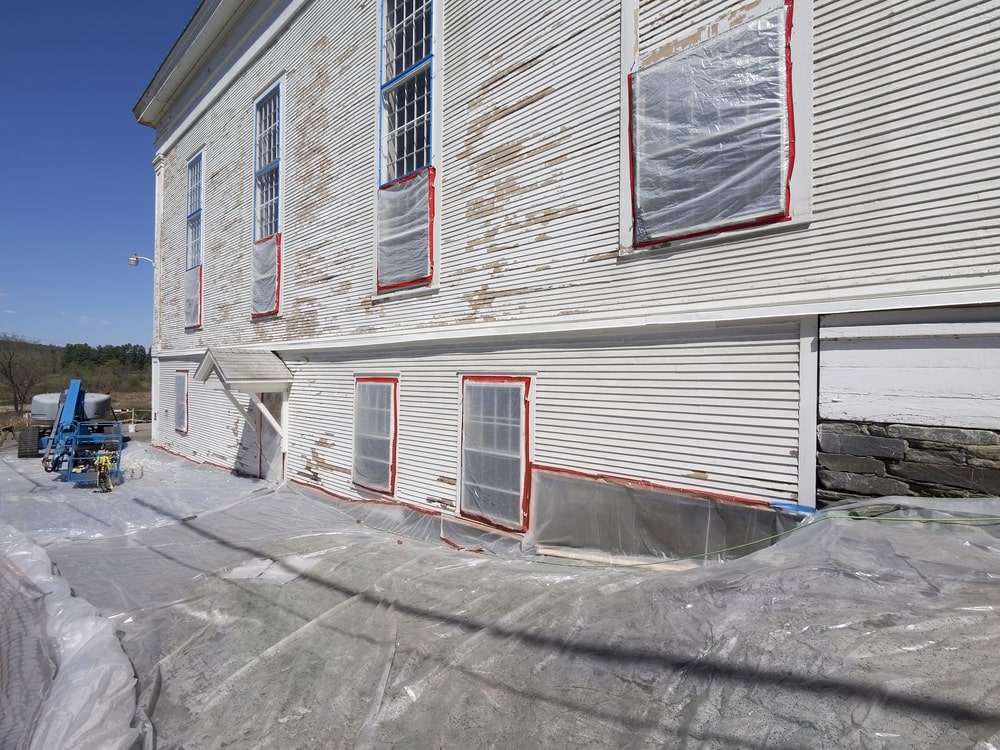Homes built before 1978 may very well contain lead-based paints and it’s important to be aware of this when you are renovating a room.
There is a proper way to remove and dispose of lead paint and if done correctly, it will be fairly low risk. However, there are alternative options that don’t require a lengthy removal; in some cases, you can leave the paint as it is. How you react will depend on your situation but remember all of the following tips before you make a decision.
Consider Getting an Inspection
If you aren’t sure you have lead paint or simply want a professional opinion, you might consider getting an inspection. Inspectors will take a look at all of your surfaces and while they may be able to test for lead on site, they can also send samples of your paint off to a lab. You can also get somebody to conduct a risk assessment, which evaluates the risk in your home inside and out.
How to Safely Remove Lead-Based Paint
If you want to remove the paint yourself, you are completely free to do so. By following these steps, you can stay safe and get rid of lead paint once and for all.
- Seal doorways with plastic and duct tape. Cover and seal the floor with plastic.
- Remove or cover furniture in plastic.
- Wear disposable clothing, HEPA masks, and goggles.
- Wet the surface before you scrape to prevent dust.
- Scrape all of the affected areas.
- Sand the remaining paint with a wet sanding sponge.
Properly Clean the Room
Once you have scraped and sanded all of the surfaces, removing the paint, you can start cleaning up. You can start by vacuuming dust from window sills and other areas. It’s important that you use HEPA filters, which are capable of filtering lead dust and fumes. You can then wash the areas with an all-purpose cleaning solution and carefully roll up all of the plastic for disposal. Once all of the plastic has been removed, you should vacuum a second time with a HEPA filter before washing the floor thoroughly.
Alternative Options
Of course, this thorough removal process isn’t the only option and depending on your situation, you may get by with one of the following alternatives.
- Encapsulation: Encapsulation involves rolling on a thick coating of paint-like substance to seal the lead paint completely. This is often effective but the coating may eventually wear off over time.
- Enclosure: The enclosure method involves covering the old surface with a new one. For example, you could cover the walls in another layer of drywall.
- Replacement: Replacement could work if the lead paint is strictly on replaceable features such as doors, windows, or woodwork. If your entire walls are covered, replacement may not be an option.
- Do Nothing: If your lead paint isn’t damaged, cracked, dusty, or peeling, you may be able to get by with leaving it alone. However, if you use the room and have small children, this may not be the best route.
Don’t forget that if you are selling your home, you will need to disclose this information if you should choose to keep the paint in the building.

Ray is an inspiring leader with a strong work ethic stemming from his exemplary upbringing in a caring and loving family environment. His parents modeled the importance of integrity and hard work to him and his siblings, values which Ray now instills in his teenage daughter. As the owner of Aspen Painting & Wallcovering, Inc., he leads by example by expecting nothing but the best from himself and his employees. His primary goal is to provide superior service and quality craftsmanship to each of his clients so that they become enthusiastic ambassadors for the company. Ray is a passionate team player who always strives to exceed expectations.

